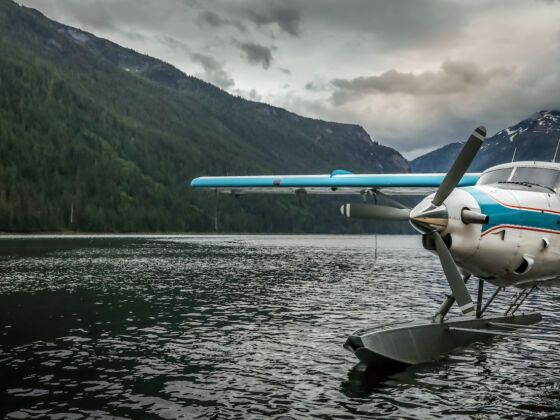SOME PILOTS REFER TO it as being a glorified taxi driver. Many pilots flying small to medium-sized aircraft in order to log hours for jobs on the big airliners and cargo planes become bored with the monotony of prescribed routes and flight plans and give it up. Then there is the passionate pilot who loves the adventure of flying in adverse conditions. The pilot who wants a challenge, and not interested in earning a fat salary. A Bush Pilot.


Bush Pilots all over the world have earned their respect from fellow pilots. There is a reason for this. To be a Bush Pilot, you do not fly by the numbers. Most of the time you do not use registered airfields or any airfields at all! It requires seat-of-the-pants flying in adverse conditions. At first glance, it looks downright dangerous and scary. With the right training, it is neither.
Realities of being a Bush Pilot
1. You’ll be away from home for extended periods.
2. Expect to live in varying types of accommodation ranging from hotels and motels to sleeping in the back of the aircraft!
3. Don’t expect a huge salary.
Pathway to becoming a Bush Pilot
Devote the best part of a year to obtain a PPL (Private Pilots License) and subsequent CPL (Commercial Pilots License) and if you are going to ferry passengers you will need an ATPL (Air Traffic Pilots License). This is if you can do the course full time. Part time, it can take up to 5 years. The cost can vary from $10,000 up to $50,000 depending on how intensive you want to do the course and how cheap you can rent a plane and instructor.
You must be prepared to study and write exams in order to pass the theoretical tests.
You must be able to deal with abnormal conditions like removing ice from the control-surfaces of the plane, because it got frozen over night. In Africa, we had to change tires because the Lions chewed through them!
Before you will get paid for any type of flying, you must meet the minimum FAA (Federal Aviation Administration) requirements.
1. You must be at least 18 years old
2. You must be able to read, write and speak English.
3. You must have at least a PPL or higher license certificate from the FAA.
4. A minimum of 250 hours flying experience.
5. Have your logbook endorsed by a certified instructor to confirm the above-mentioned ratings and experience.
6. Pass all the practical and theoretical tests in order to hold a Commercial Pilots License. Most flight schools, that train commercial pilots, have a set program for students to obtain this type of certificate.
After you have obtained your Commercial Pilots License, you can go to a flight school that specializes in training pilots to become Bush Pilots. This normally includes training to fly airplanes equipped with floats, skis or tundra wheels. These flight schools will also train you to fly in abnormal conditions. This will include learning to land on lakes, gravel-bars on riverbanks and frozen lakes in winter.
There are a number of flight schools that offer this type of training, and depending on what type of environment, type of aircraft and type of work you will be doing, the courses run from a few hours to a week. On average a Ski Plane and Glacier Landing training course will last for 5 hours at a cost of around $1800 and will include two night’s lodging. A Sea Plane Refresher Course can cost around $180 per hour. A Bush- and Mountain flying course includes 5 hours ground- and 5 hours flight training and costs around $1400 with two nights lodging. An Advanced Bush Pilot Course can take up to 5 days, and will include 5-7 hours ground training and 5-7 hours flight training. This course will cover mountain flying, river landings and high altitude lakes. This course will challenge you, and sharpen your skills as a pilot. These courses are very helpful and necessary for any aspirant Bush Pilot who is going to fly in Alaska, Canada or operate in off-airport conditions.
You will learn to land, and take off in circumstances that conventional pilots regard impossible or very dangerous. You will learn precision flying, and would be able to get your aircraft in to very confined spaces, and out again. You will be able to do it safely and confidently. You would regard this as a normal day at the office. You will become one of “them,” a bush pilot.
More info: